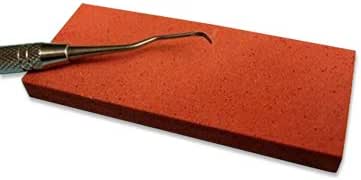So, you’ve just painstakingly sharpened your knives – perhaps a cherished chef’s knife, a trusty paring knife, or even a whole set. Congratulations! You’ve invested time and effort in ensuring your knives slice through ingredients like butter. Now, the crucial question: how do you store them to maintain that razor-sharp edge? Proper storage isn’t just about keeping your knives safe; it’s about preserving the hard work you put into sharpening them.
Why Proper Storage Matters After Sharpening

The sharpness of your knives is directly related to the integrity of their blades. A dull knife is not only inefficient but also more dangerous, as it requires more force to cut, increasing the risk of slippage and accidents. Storing your knives improperly can quickly negate the benefits of sharpening. Factors like impacts, rust, and even simple exposure to moisture can lead to chipping, dulling, and even damage to the blade’s finish.
Understanding the Enemy: Factors that Dull Knives
Before we dive into storage solutions, let’s understand what we’re trying to prevent. Several factors contribute to knife dulling after sharpening:
- Impact and Collision: Knives banging against each other in a drawer or hitting hard surfaces are a major culprit. This can chip the blade, creating microscopic imperfections that lead to dullness.
- Rust and Corrosion: Exposure to moisture and humidity is a significant threat, especially to carbon steel knives. Rust eats away at the blade’s surface, leading to irreparable damage.
- Accidental Damage: Improper storage can lead to knives being accidentally knocked over, dropped, or even bent, significantly compromising their sharpness.
Optimal Knife Storage Methods: A Comprehensive Guide

Choosing the right storage method depends on your knife collection’s size, your budget, and your kitchen’s aesthetics. Here are some of the best options:
Magnetic Knife Strips
Magnetic strips are a popular and visually appealing option. They’re easy to install, usually mounted on a wall, and keep your knives readily accessible. However, they require careful consideration. The blades should be thoroughly dry before storage to prevent rust. Ensure the magnets are strong enough to hold your knives securely, preventing accidental falls. Some users find that magnetic strips can damage the knife’s finish over time through constant friction.
Knife Blocks
Wooden knife blocks are a classic choice, offering a convenient and protective storage solution. They often come in various sizes and designs to accommodate different knife sets. However, be mindful of the quality of the block. A poorly constructed block may not adequately protect the knife blades from impact. Also, wooden blocks can harbor bacteria if not regularly cleaned and maintained. Some modern blocks are made from more hygienic materials like plastic.
In-Drawer Knife Organizers
These organizers are designed to fit inside your kitchen drawers, providing a safe and space-saving way to store your knives. They usually feature individual slots to separate knives, preventing them from bumping against each other. Look for organizers with soft-lined slots to further minimize the risk of scratching or damaging the blades. However, this method requires sufficient drawer space and might not be as visually appealing as other options.
Sheaths and Cases
Individual sheaths or cases, particularly those made of high-quality leather or synthetic materials, offer exceptional protection for your knives. This method prevents contact with other objects and also protects the blade from moisture. Sheaths are ideal for valuable or antique knives. However, this method can be less convenient for daily use as it requires removing the knife from its sheath each time.
Things to Avoid When Storing Knives

Here are some common mistakes to avoid when storing your freshly sharpened knives:
- Storing in a regular kitchen drawer: This is a recipe for disaster, as knives will clink against each other and other utensils, leading to dulling and damage.
- Leaving knives wet: Moisture is a breeding ground for rust and corrosion, especially on carbon steel knives. Always dry your knives completely before storing.
- Using inappropriate storage solutions: Avoid using containers that could scratch, chip, or dent the blade.
Maintaining Your Knives After Sharpening: A Note on Ongoing Care

Proper storage is only part of the equation. Regular maintenance, including occasional honing and professional sharpening, ensures your knives remain sharp and efficient. Avoid using your knives to cut hard surfaces such as bones or frozen foods – that is an easy way to quickly dull them! Remember, a little care goes a long way in preserving your valuable knives and ensuring they perform their best, time after time.
By following these guidelines, you can safeguard your investment and enjoy the pleasure of working with perfectly sharp knives for years to come.